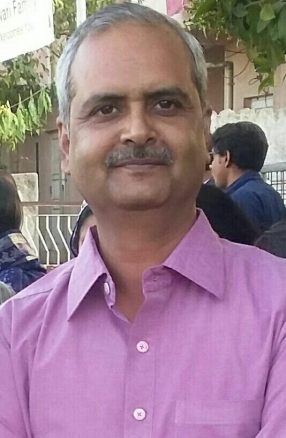Voluntary Citizen or Civil Society Sector
Saving the catchment area
Posted on 07 Sep, 2016 09:39 PMRiver Yamuna, the largest tributary of river Ganga, is the most threatened river system in the country. It faces over abstraction of water and increasing pollution load (municipal and industrial) throughout its course.

Water brings two villages alive
Posted on 07 Sep, 2016 11:23 AMIt had been a chaotic morning. With so many people bustling around the small house, Avani was looking forward to celebrating her only son's second birthday. Graciously, her husband agreed to have the celebration at Avani’s mother’s place this time. Her mother made all the arrangements for the pooja and prasadam while Avani was to take care of the guests.

Damn the dams, say the displaced
Posted on 30 Aug, 2016 12:28 PM"If you are to suffer, you should suffer in the interest of the country.”
- Jawaharlal Nehru, speaking to villagers who were to be displaced by the Hirakud Dam in 1948.

Water warriors at work
Posted on 24 Aug, 2016 09:31 AMThe pitiful state of some of the water bodies in the country, coupled with the sheer apathy of the government, have forced some well-meaning citizens to come out of their comfort zones and make a difference. Some of these efforts, like the Puttenahalli lake in Bengaluru that is now overflowing with clean water, have been successful, while others are ongoing.

Call for applications: Closing The Environmental Compliance Gap
Posted on 21 Aug, 2016 10:36 PMIn the field of environmental justice, compliance is one of the least understood and researched topics. Since compliance may involve scientific and technological aspects of the environment, it is mostly left to technical experts, regulatory bodies and members of the industry. It has seen almost no public engagement or community action at the field and at policy levels.
Notes from Swachh Madhya Pradesh campaign
Posted on 21 Aug, 2016 09:56 PM Ajit Tiwari is Deputy Commissioner, Swachh Bharat Mission, Madhy
Ajit Tiwari is Deputy Commissioner, Swachh Bharat Mission, Madhy

Staying afloat, one stepwell at a time
Posted on 19 Aug, 2016 01:09 PM"Jatene dekho utene bawri" (wherever you look, there’s a stepwell). This is how the woman standing on the threshold of her house, in the walled city of Jodhpur, told us when we asked where we could find stepwells in her neighbourhood.

Community effort saves mangroves
Posted on 04 Aug, 2016 09:52 AMCome monsoon, the villages in the Sundarbans islands witness nature’s fury with floodwaters overriding all boundaries and inundating huge tracts of land. As such, the earthen embankments, stretching to 3600 kms on the 54 inhabited islands out of a total of 102 in the Sundarbans, protect scores of people from floods and tidal waves.

Mines radiate disaster
Posted on 04 Aug, 2016 09:43 AMThe body of Guria Das looked like that of a three-year-old when she passed away at the age of 13. Guria was born in 1999 with a condition that constrained her growth. Her father, Chhatua Das recounts how Guria, unable to speak or move, communicated with him and his wife through gestures; a language that only the three of them could comprehend.

Living in fear of water
Posted on 31 Jul, 2016 11:41 AMFarmer Ravikant Deshmukh (40) is a much worried man. He lives in Kudari Dalli in Balod district in Chhattisgarh, a village that would get affected adversely if Mohar reservoir project takes off. The project, once realised, is estimated to submerge the agricultural land and houses of 1200 villagers in Kudari Dalli.






